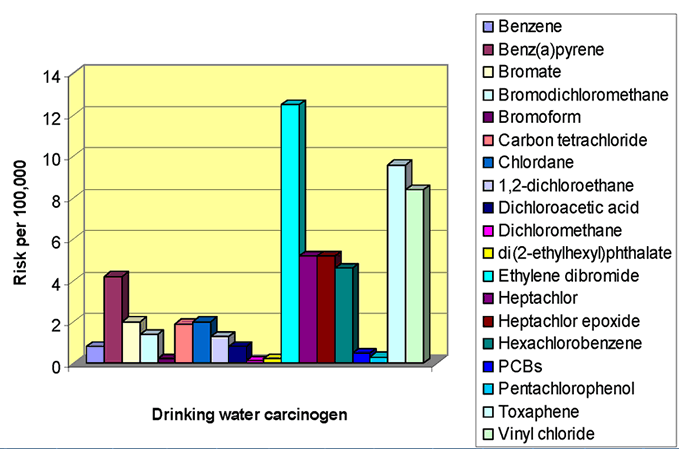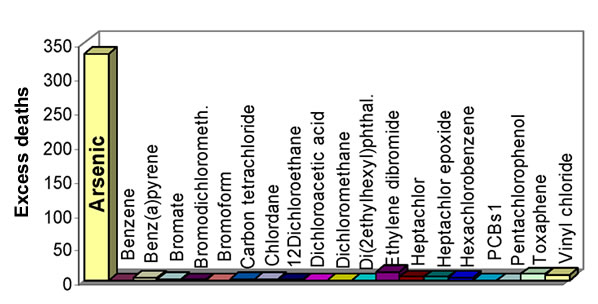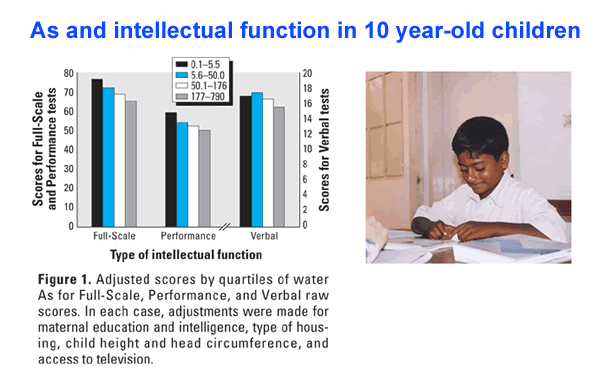Health Risks Research
Health Risks for Infants and Children
Research in Bangladesh shows prenatal exposure to inorganic arsenic occurs when pregnant women drink well water containing arsenic (Hall, Gamble et al, 2007). Children are born with the same blood arsenic concentrations as their mothers. Exposure to arsenic in utero and early childhood has been shown to lead to increased mortality from lung cancer and bronchiectasis in young adults (Smith, Marshall et al, 2006).
Arsenic (As) and Intellectual Function
An investigation of the impact of water arsenic exposure on both 10 year olds and 6 year olds in Bangladesh shows that exposure to arsenic from drinking water is associated with reduced intellectual function. The research on 6 year olds controlled for water manganese [Mn], blood lead levels and sociodemographic features that contribute to intellectual function. A comparable reduction in child IQ was observed in school children in Maine, USA, among those exposed to relatively low levels of arsenic from their household wells (Wasserman et al, 2014).
Level of risks from Arsenic at the Maximum Contaminant Level for Drinking Water
Risks from arsenic at the Federal Maximum Contaminant Level (MCL) for drinking water (10µg/l or 10ppb) are significantly higher than for other drinking water contaminants, at their MCL.
Estimated excess cancer risks per 100,000 people exposed at the MCL for each drinking water chemical carcinogen, excluding arsenic

Estimated cancer risk deaths per 100,000 people exposed at the MCL for each drinking water chemical carcinogen, including arsenic

Comment on Uncertainty: The number for arsenic deaths at the 10ppb MCL comes from the NRC 2001 Update on Arsenic in Drinking Water. While the authors of the update agreed that the extensive data from SW Taiwan provides a sound database on the effects of arsenic on humans, adequate for risk assessment, a number of sources of uncertainty in the data remain. Metabolism of arsenic varies markedly between individuals though it’s not clear how to account for that variability in a quantitative dose response analysis.
The choice of dose measurement (cumulative exposure, lifetime average exposure, peak exposure) is a source of uncertainty and the possible confounding impact of smoking adds to the uncertainty as well. Finally, Subcommittee members did not agree on the right background cancer risk to use, though the choice made to use US rather than Taiwanese background cancer incidence reflects standard epidemiological practice to use background incidence in the country of interest.




